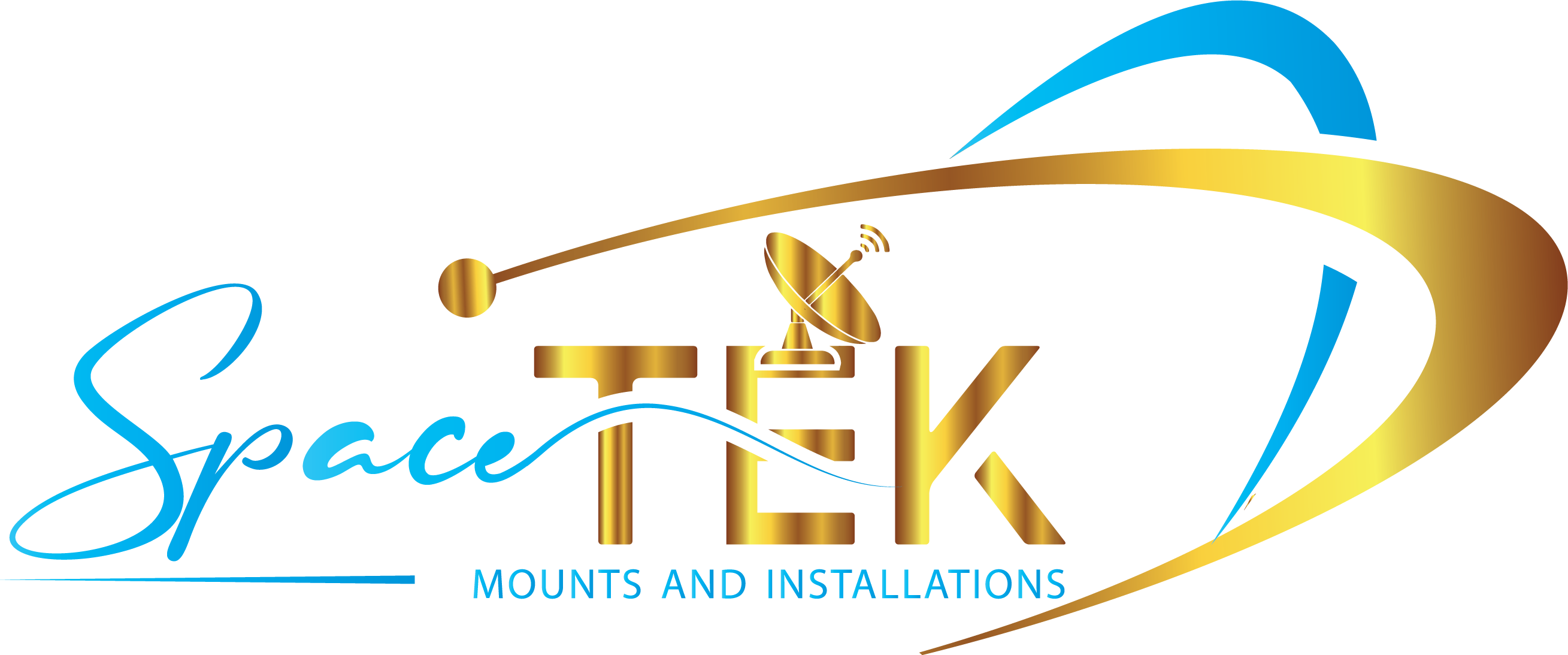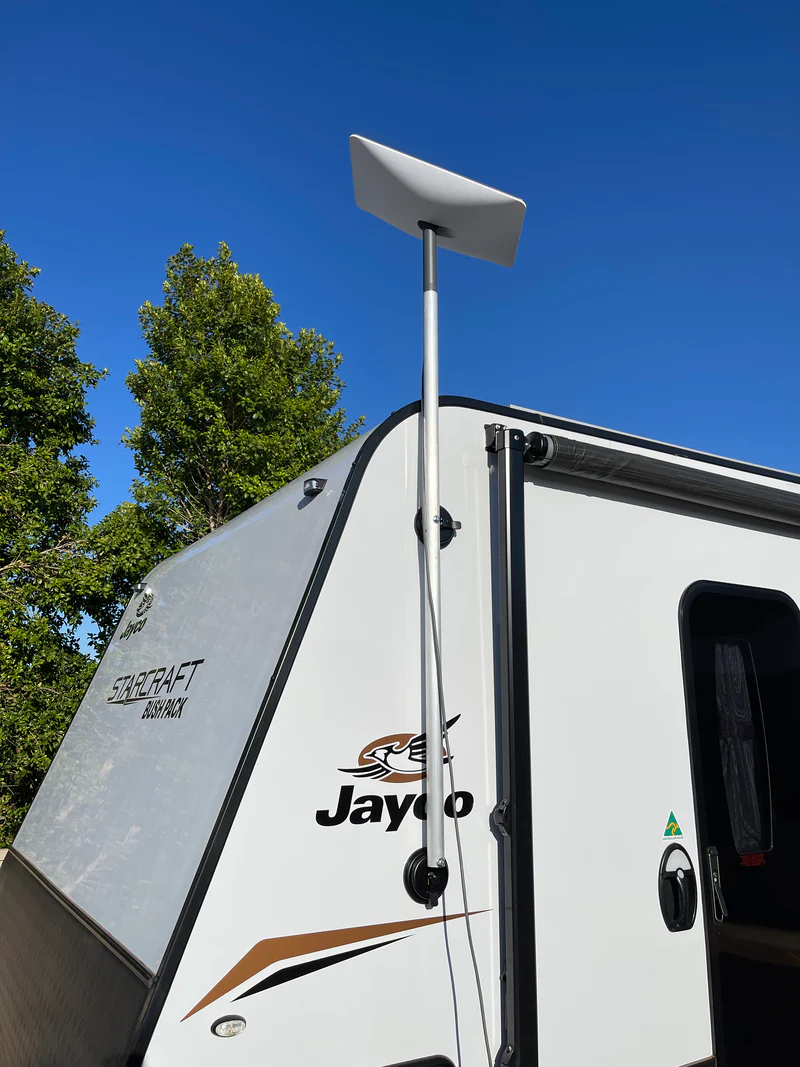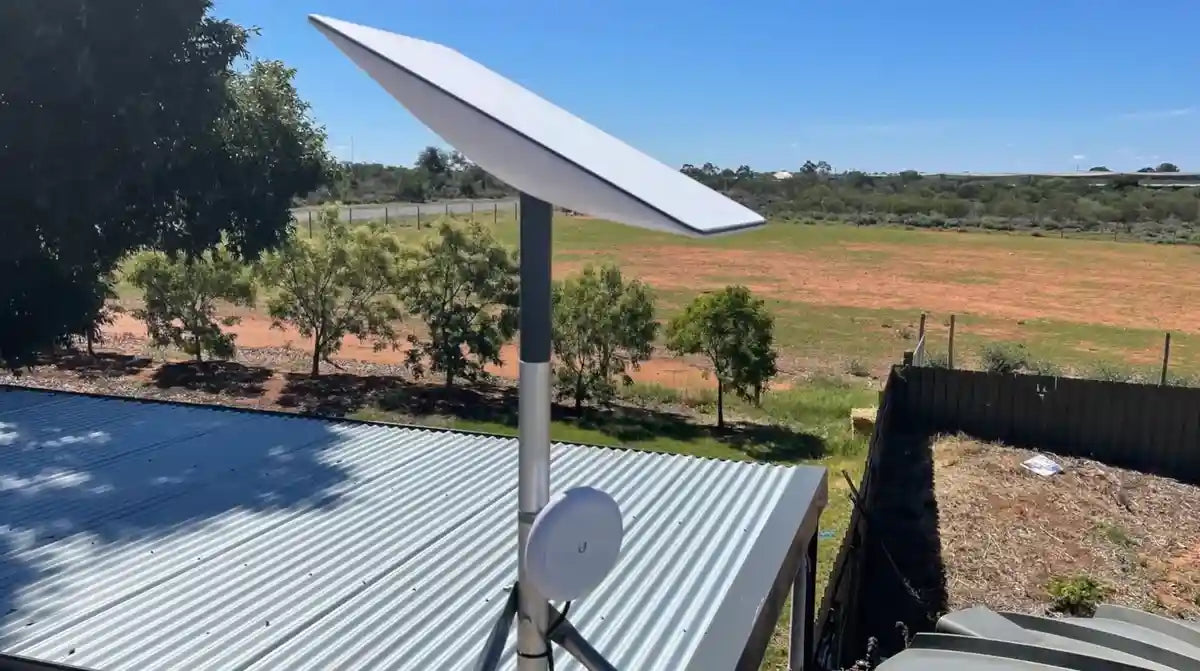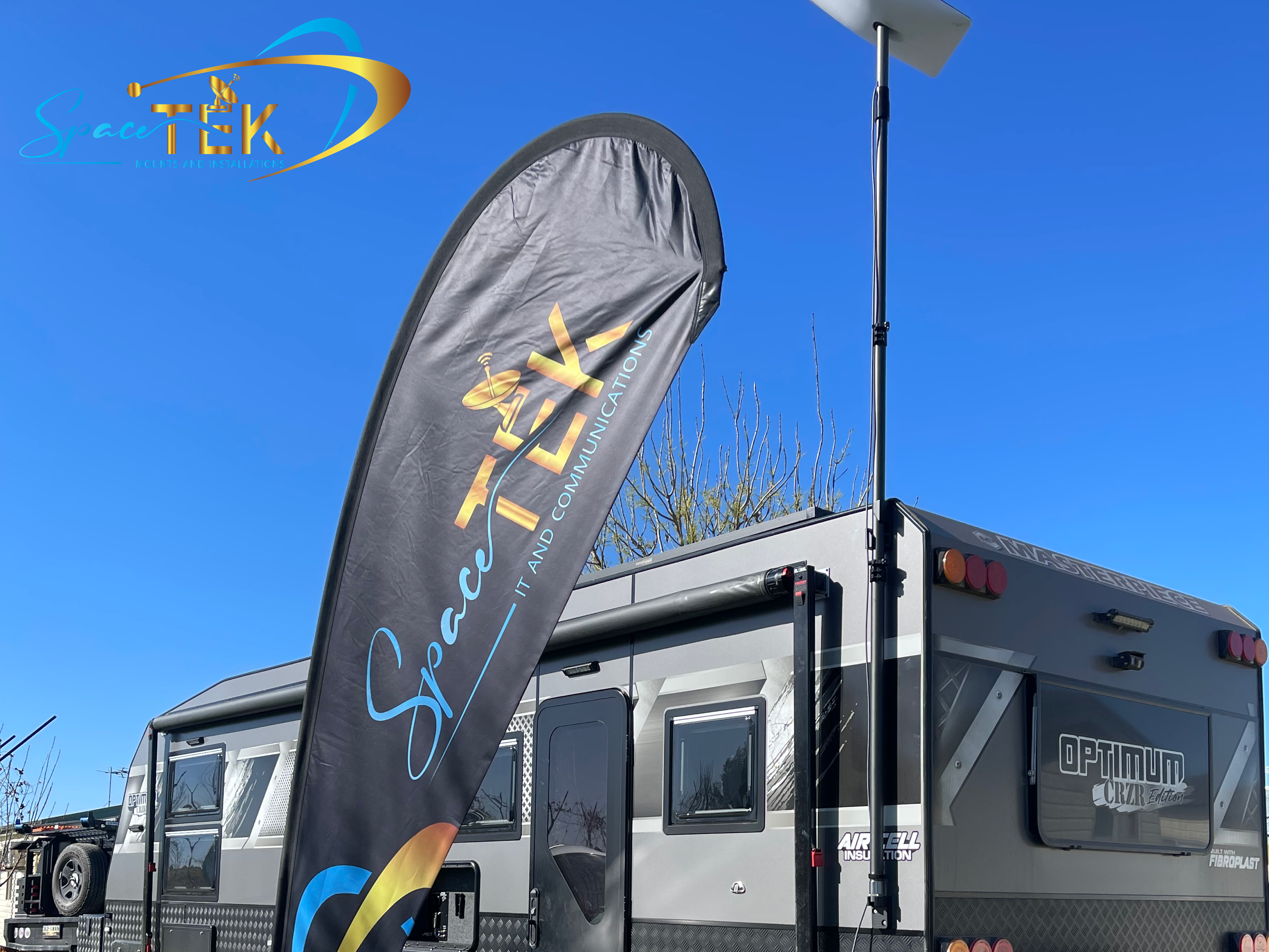Why Vibration is Your Mobile Starlink's Worst Enemy
Reduce vibration on mobile starlink setups to maintain reliable internet connectivity and protect your hardware from premature wear. Here's what you need to know:
Quick Solutions to Reduce Vibration:
- Use quality mounts with integrated dampening - Look for rubber isolators or vibration dampening pads
- Apply thread locker to all fasteners - Prevents loosening from constant movement
- Mount on rigid, flat surfaces - Reduces flex and resonance
- Torque fasteners correctly - Maximum 7.5 ft-lbs as per Starlink specifications
- Inspect regularly - Check for loose hardware and wear every few weeks
Vibration from road corrugations, engine harmonics, wind buffeting, and waves can severely impact your Starlink's performance. The dish uses a phased array antenna that needs precise alignment to track satellites overhead. Even minor vibrations can cause micro-interruptions, slower speeds, and connection drops.
Over time, persistent vibration accelerates hardware wear, stresses internal components, loosens fasteners, and increases the risk of water ingress through compromised seals. This is particularly challenging in Australian conditions where outback roads, coastal winds, and harsh weather put extra strain on mobile installations.
I'm Aaron Wroblewski, founder of SpaceTek Australia, and I've spent over 25 years working with remote communications systems including satellite internet in some of Australia's toughest environments. Through designing mounting solutions specifically to reduce vibration on mobile starlink installations, I've seen how proper vibration management transforms connectivity for travellers, remote workers, and off-grid users.
Reduce vibration on mobile starlink vocab to learn:
A Practical Guide to Reducing Vibration
Taking your Starlink on the road or out to sea opens up incredible possibilities for staying connected. But there's a catch: vibration. Whether you're bouncing along corrugated outback tracks, cruising coastal waters, or simply dealing with engine rumble, understanding how these forces affect your system is essential for maintaining reliable connectivity.
Understanding Vibration's Impact on Performance and Hardware
Your Starlink dish isn't just a simple antenna—it's a sophisticated piece of technology featuring a phased array antenna that actively tracks satellites orbiting overhead. This requires incredibly precise alignment, and here's where vibration becomes your nemesis.
Even subtle movements can throw off this delicate tracking process. Think of it like trying to hold a laser pointer steady on a distant target while riding in a car. Those tiny disruptions create what we call micro-interruptions—brief moments where the dish loses its optimal lock on the satellite. You might not experience complete disconnections, but you'll definitely notice slower speeds, increased latency, and frustrating drops during video calls or streaming sessions.
Starlink themselves acknowledge this challenge. In their support documentation on how vessel movement impacts service quality, they explain that oscillation and movement can significantly affect performance. For more strategies on optimising your connection, have a look at our guide on Starlink Performance Tips: Positioning, Cables, Mounts for Best Signal.
The damage doesn't stop at performance issues. Long-term hardware wear from persistent vibration is equally concerning. Internal components experience ongoing stress, fasteners gradually loosen despite your best efforts at installation, and those compromised connections create pathways for water ingress. While Starlink dishes carry an IP56 rating for water and dust resistance, constant vibration can create gaps in seals and mounting points that weren't there before. Protecting your investment means getting ahead of these vibrational forces rather than reacting to failures down the track.
Passive Vibration Isolation: Your First Line of Defence
When it comes to defending your mobile Starlink against vibration, passive isolation techniques are your most practical and reliable option. These solutions work by absorbing vibrational energy before it reaches your dish, without requiring any power source or complicated electronics.
The secret lies in the materials and engineering of your mounting solution. Vibration dampening pads, elastomeric mounts, and rubber isolators are specifically designed to flex and absorb kinetic energy, converting it to heat rather than transmitting it directly to your dish. Many quality mounts integrate these features right into their design—the vibration dampening pad included with well-engineered mounts serves precisely this purpose.
What makes passive systems so appealing? They're inherently reliable because there's nothing to break down or fail. No batteries to charge, no sensors to malfunction, just solid engineering doing its job. They're also straightforward to install and maintain, making them accessible for anyone comfortable with basic tools.
The trade-off is that passive systems tend to be frequency-specific. A mount designed to absorb high-frequency road chatter might be less effective against low-frequency engine vibrations or the slow roll of ocean swells. This is why the quality of materials matters enormously.
At SpaceTek Australia, we've designed our mounts with this balance in mind. We use high-quality materials like durable aluminium and stainless steel hardware to create a rigid mounting surface that minimises flex and resonance. This robust construction naturally helps reduce vibration on mobile starlink installations without adding complexity. The engineering behind our mounts focuses on creating stable platforms that work with passive dampening principles to protect your hardware. For deeper insights into selecting the right solution, explore our guide: Mobile Internet Mastery: Choosing Your Starlink Vehicle Mount.
Mounting Solutions to Reduce Vibration on Mobile Starlink Setups
Selecting the right mount isn't just about attachment—it's about creating a stable, vibration-resistant foundation for your dish. Different Starlink models and mobile applications demand custom approaches, and using the wrong mount can undermine even the best dampening technology.

For Starlink Gen 3 users, we've developed robust solutions that handle the unique challenges of in-motion use on RVs, caravans, and vehicles navigating Australia's diverse terrain. Our Gen 3 Mounts and Accessories collection prioritises stability and durability, essential for maintaining connectivity while on the move.
The Gen 2 Starlink (the rectangular or actuated dish) requires its own specialised approach. Our Gen 2 Mounts and Accessories provide secure fits engineered to reduce the dish's susceptibility to vibration. Starlink's Maritime/Mobility installation guides explicitly recommend using removable thread locker on all threaded fasteners to prevent loosening—a practice we champion in our designs.
The compact Starlink Mini has become increasingly popular for its portability, but it still needs a stable foundation to perform properly. Our Starlink Mini Mounting Options offer secure attachments with integrated vibration dampening features, ensuring your Mini maintains connection even on bumpy roads.
Whether you're outfitting an RV for cross-country adventures, a caravan for weekend escapes, or a work vehicle for remote operations, our range of Starlink RV and Portability Accessories is specifically curated for Australian conditions. Our mounts use rust-resistant materials that withstand coastal salt spray, outback dust, and tropical humidity. This focus on engineering excellence minimises dish movement, which is critical for maintaining signal integrity and preventing premature wear on your hardware.
Installation Best Practices to Minimise Vibration
Even the most sophisticated anti-vibration mount will underperform if installed incorrectly. Proper installation is your best opportunity to reduce vibration on mobile starlink setups and ensure years of reliable service. Here's what we've learned from installing countless systems across Australia:
Thread locker is non-negotiable. The most common failure point in mobile installations is fasteners loosening over time from constant vibration. Use a removable thread locker (such as Loctite 222) on all threaded fasteners. This creates a secure bond that resists vibrational loosening while still allowing future disassembly if needed. Starlink's own installation documentation recommends this practice, and we've seen how it prevents problems down the track.
Correct torque matters more than you'd think. Over-tightening strips threads or damages components, while under-tightening leaves room for movement. The recommended torque for Starlink mount fasteners is a maximum of 7.5 ft-lbs (for 1/4-20 fastener threads). Using a torque wrench ensures you hit this sweet spot consistently.
Sealing against water ingress protects your investment. Mobile environments mean constant exposure to moisture, especially in marine applications or during Australian wet seasons. Use sealing washers and a bead of silicone sealant around the mount base and near fastener heads. While the Starlink dish and power supply are IP56 rated, mounting points remain vulnerable, and proper sealing prevents corrosion that can compromise your entire setup.
Cable management reduces stress points. Loose cables flapping in the wind create additional vibration and stress on connection points. Secure your Starlink cable tightly along its path, ensuring nothing dangles freely. Remember the minimum cable bend radius is 5cm (2 inches)—sharp kinks can reduce throughput speed. Proper cable management protects the cable itself and contributes to overall system stability.
Use the Starlink App's obstruction tool strategically. While primarily for signal optimisation, a clear line of sight also reduces how often the dish needs to reorient itself, which can introduce minor movements. The app's obstruction tool helps you identify and avoid obstructions effectively. For a seamless setup process, check out our Starlink Dish Installation Tips: Get Connected Fast and Easy.
Advanced and Post-Installation Vibration Mitigation
While passive isolation and careful installation form the foundation of a stable mobile Starlink setup, it's worth understanding more advanced concepts and, crucially, what happens after your system is running.
While highly specialised applications use complex active vibration isolation systems, their cost and complexity make them impractical for consumer mobile Starlink installations. For all practical purposes, focusing on robust passive solutions and meticulous installation delivers the best and most reliable results.
Once your Starlink is installed, the work doesn't stop. Regular post-installation checks and maintenance are vital for long-term performance. Make it a habit to inspect fasteners periodically, ensuring all bolts and screws remain tight. Even with thread locker, environmental factors can cause gradual changes over months of use.
Check for wear and tear on the mount itself, particularly around connection points. Rubber dampening elements can degrade over time, especially in harsh Australian sunlight, and may need replacement. Monitor your Starlink app for sudden drops in speed or increases in latency—these can be early indicators of vibration-induced issues that are easier to address before they become serious problems.
Addressing these concerns promptly prevents minor annoyances from escalating into significant hardware damage. For comprehensive guidance on keeping your setup in top condition, refer to our article on Starlink Mount Maintenance: How to Keep Your Setup Performing Like New.
Conclusion: Secure Your Connection for the Long Haul
Throughout this guide, we've explored how vibration poses a real threat to your mobile Starlink's performance and longevity. From the micro-interruptions that slow your internet speeds to the long-term hardware wear that can lead to costly replacements, the challenges are significant but entirely manageable.
The solution isn't complex, but it does require attention to detail. A stable mounting solution forms your foundation—one that incorporates vibration dampening materials and robust construction. Pair this with careful installation practices like using thread locker on fasteners, torquing bolts correctly to a maximum of 7.5 ft-lbs, and sealing against water ingress. Finally, commit to regular maintenance checks to catch any issues before they escalate. These three pillars working together will reduce vibration on mobile starlink setups and deliver the reliable, high-speed internet you're counting on.
We've seen countless Australian travellers, remote workers, and off-grid enthusiasts transform their connectivity experience simply by getting their mounting right. Whether you're navigating corrugated outback tracks in an RV, working from a caravan in coastal areas, or operating equipment in harsh rural conditions, proper vibration management makes all the difference.
At SpaceTek Australia, we've built our reputation on understanding these challenges intimately. Our mounts aren't just brackets—they're engineered solutions designed specifically for Australian conditions. We use high-quality aluminium construction, stainless steel hardware, and rust-resistant materials that stand up to our harsh climate. Every mount is designed to be user-friendly, ensuring a secure installation and optimal dish performance.
Whether you need a solution for your Gen 3, Gen 2, or Starlink Mini, we've got you covered. Our range includes everything from roof mounts to portable options, each designed to minimise movement and maximise signal stability. We're confident that our mounts are the most secure, rust-resistant, and user-friendly options available for Australian mobile Starlink users.
Ready to eliminate vibration issues and enjoy uninterrupted internet on your next adventure? Explore our complete range of Starlink RV and Portability mounts to find the perfect fit for your adventure. Not sure which mount suits your specific setup, or have questions about installation in challenging conditions? We're here to help. Get in touch with us for expert advice—we love talking about this stuff and helping fellow Australians stay connected, no matter where the road takes them.




Leave a comment
This site is protected by hCaptcha and the hCaptcha Privacy Policy and Terms of Service apply.